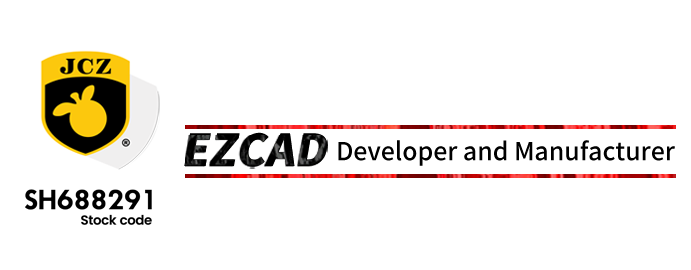Introduction to 3D Printing Software
In the rapidly evolving landscape of 3D printing, the role of 3D printing software cannot be overstated. This software acts as the crucial link between the digital design and the physical object produced by a 3D printer. Whether you’re a hobbyist or a professional, understanding the various types of 3D software for 3D printing is essential for maximizing the potential of your 3D printer applications. From designing intricate models to preparing files for printing, 3D printing software is at the heart of the additive manufacturing process.
Many users are drawn to the idea of creating custom objects, and with the right 3D printing software, this dream can become a reality. Not only does this software provide the tools needed for design and modeling, but it also helps optimize the printing process, ensuring that the final product meets the desired specifications. With a plethora of options available, selecting the right 3D printer program can significantly influence the quality and efficiency of your 3D printing projects.
Types of 3D Printing Software
There are several types of 3D printing software available, each tailored for specific needs. For instance, CAD (Computer-Aided Design) software allows users to create detailed models from scratch, making it perfect for complex designs. This category of 3D software for 3D printing is widely used in industries ranging from architecture to engineering.
Additionally, slicing software is crucial for preparing models for printing. This software converts 3D models into a format that a 3D printer can understand. It slices the model into layers and generates the necessary G-code, ensuring accurate printing. Many users also explore free 3D software for 3D printing options, which can be ideal for beginners or those experimenting with new designs without financial commitment.
Benefits of Using 3D Printing Software
The advantages of using specialized 3D printing software are manifold. For starters, these programs often come with a variety of tools that simplify the modeling process. Features such as templates, pre-designed components, and intuitive interfaces allow users to create complex designs with relative ease. This is especially beneficial for individuals interested in exploring various 3D printer applications without extensive training.
Moreover, 3D printing software often includes built-in simulation tools that allow users to visualize how their designs will print. This can save time and material, as it helps identify potential issues before the actual printing process begins. By leveraging 3D software for 3D printing, users can enhance their creative workflow and achieve better outcomes.
Free 3D Software Options
For those just starting or looking to experiment, free 3D software for 3D printing is an excellent resource. Many popular programs offer free versions with robust features, enabling users to dive into the world of 3D printing without a significant investment. These free 3D printer programs often include basic modeling tools, slicing capabilities, and community support, making them ideal for newcomers.
Some noteworthy free options include Tinkercad, a user-friendly online platform that’s great for beginners, and Blender, which offers advanced features for more experienced users. Utilizing free 3D printing software allows enthusiasts to develop their skills and understand the capabilities of 3D printing technology before committing to paid software.
Common 3D Printer Applications
3D printing has a wide range of applications across various industries, and the right 3D printing software enhances these possibilities. In the medical field, for instance, 3D printing software is used to create custom prosthetics, dental implants, and anatomical models for surgical planning. The ability to customize designs based on patient-specific data is revolutionizing healthcare practices.
In the realm of education, 3D printing applications are becoming increasingly popular. Schools and universities are incorporating 3D printing software into their curricula, allowing students to engage in hands-on learning experiences. By designing and printing their own projects, students gain valuable skills in design, engineering, and problem-solving.
Integrating 3D Printing Software with Hardware
To fully realize the potential of 3D printer applications, it’s essential to integrate 3D printing software effectively with the hardware. Understanding the compatibility between the chosen software and your 3D printer is crucial for smooth operation. Most 3D printers come with recommended software, but users often have the flexibility to explore alternative options.
For instance, a popular choice among 3D printing enthusiasts is to use open-source slicing software that allows for extensive customization. This integration not only enhances the printing experience but also empowers users to experiment with different settings and configurations, optimizing their results.
Innovations in 3D Printing Software
The field of 3D printing software is constantly evolving, with new features and improvements being introduced regularly. Innovations such as cloud-based design platforms allow for easier collaboration among users, enabling teams to work on projects remotely. This trend is particularly beneficial for professionals working on complex designs that require input from multiple stakeholders.
Moreover, advancements in artificial intelligence are beginning to influence 3D printing software capabilities. AI can optimize design processes by suggesting improvements or identifying potential issues in models, thereby enhancing the overall quality of 3D printer applications.
Conclusion
In conclusion, 3D printing software serves as a vital component in the world of additive manufacturing. Its ability to facilitate design, streamline the printing process, and enhance the capabilities of 3D printers makes it indispensable for enthusiasts and professionals alike. With a variety of options available, including free software, users can explore and maximize the potential of their 3D printer applications. As technology continues to advance, the integration of innovative features in 3D printing software will only expand the horizons of what’s possible in this dynamic field.
由用户整理投稿发布,不代表本站观点及立场,仅供交流学习之用,如涉及版权等问题,请随时联系我们(yangmei@bjjcz.com),我们将在第一时间给予处理。
Post time: Oct-08-2024






